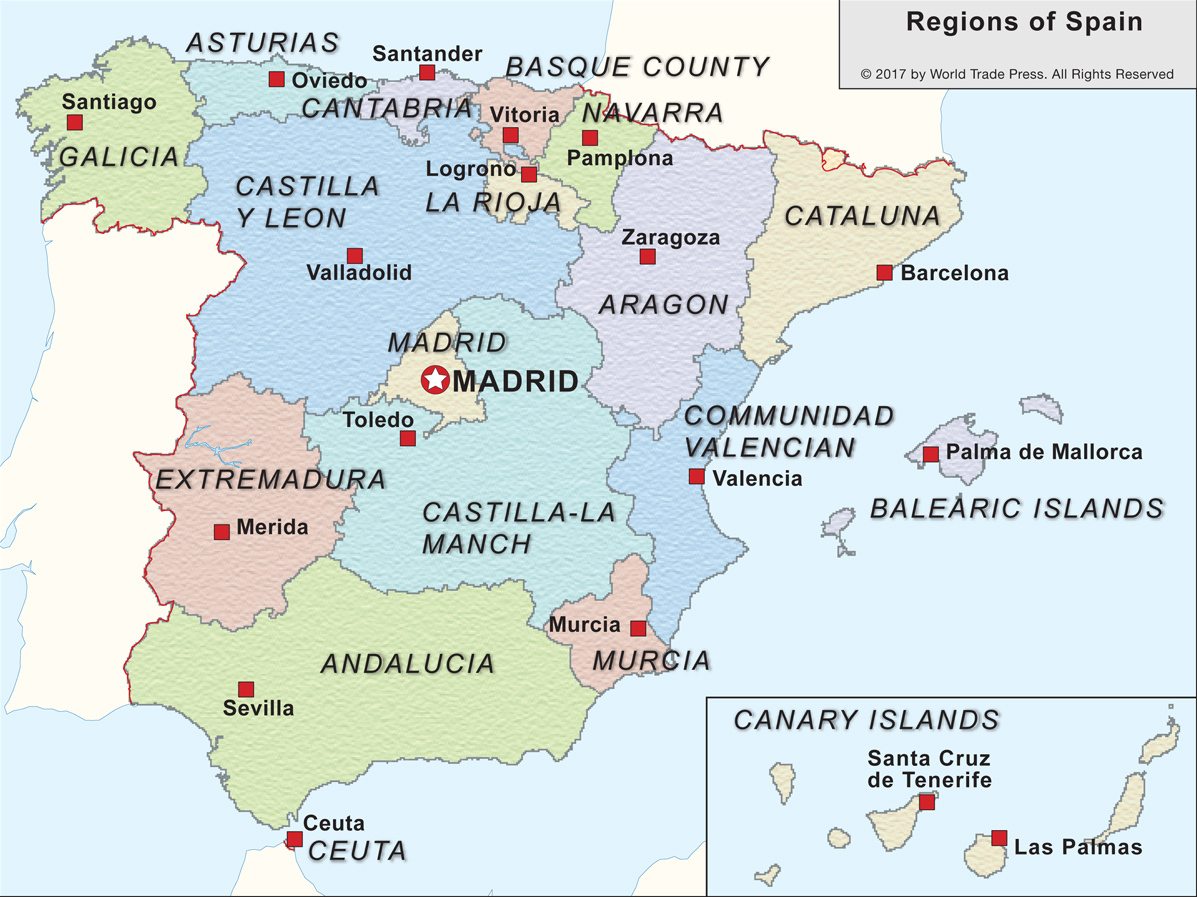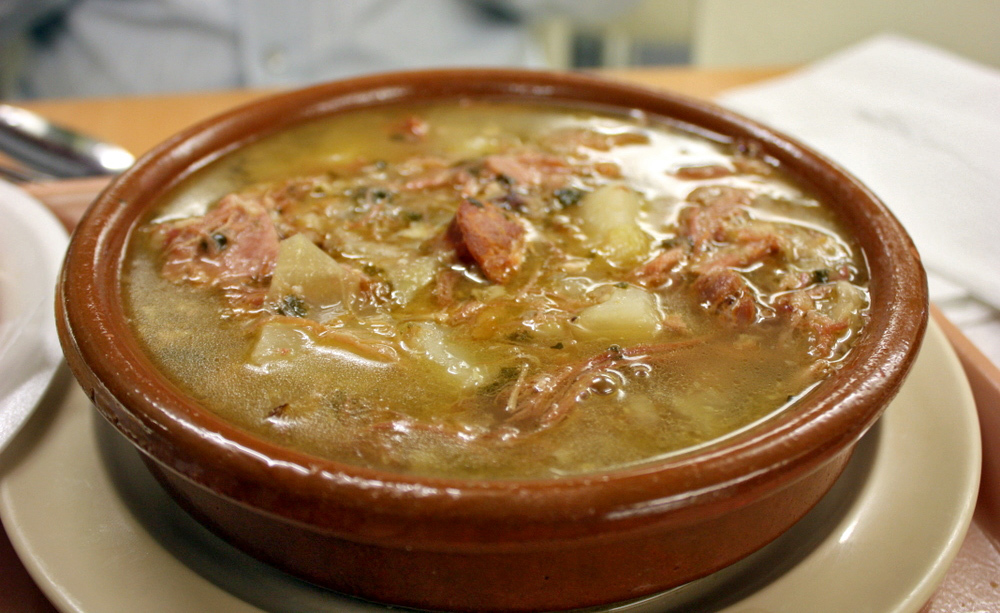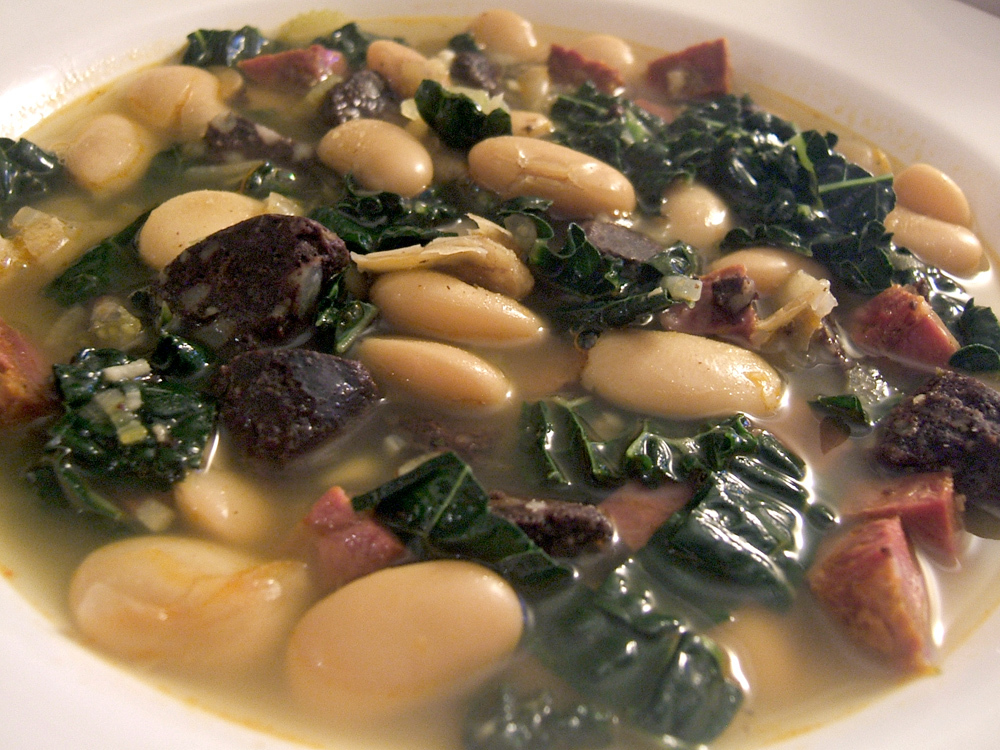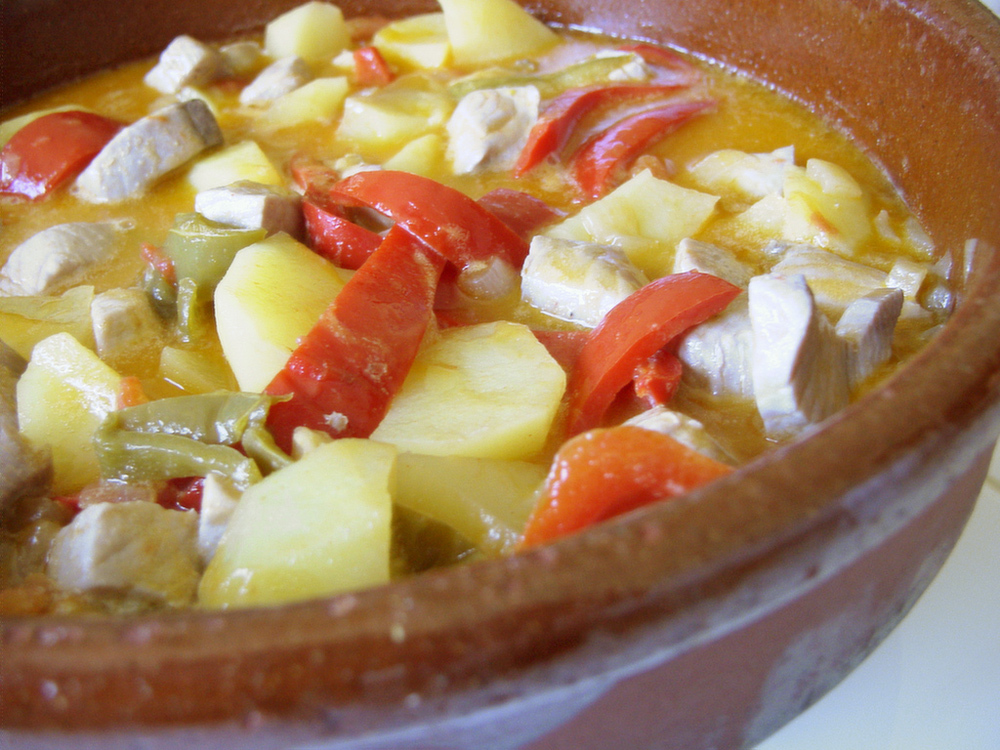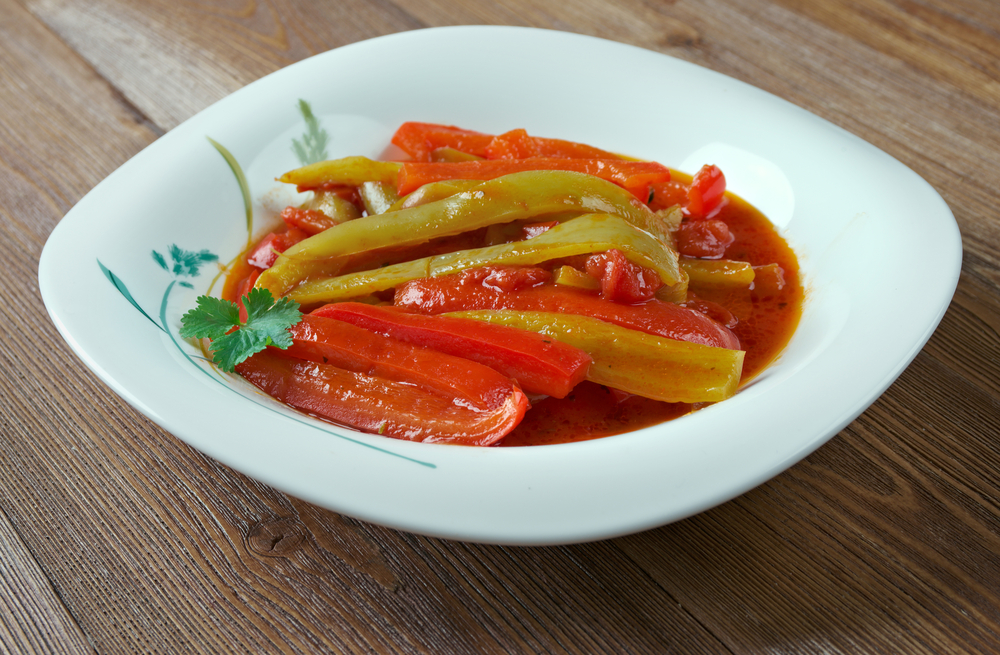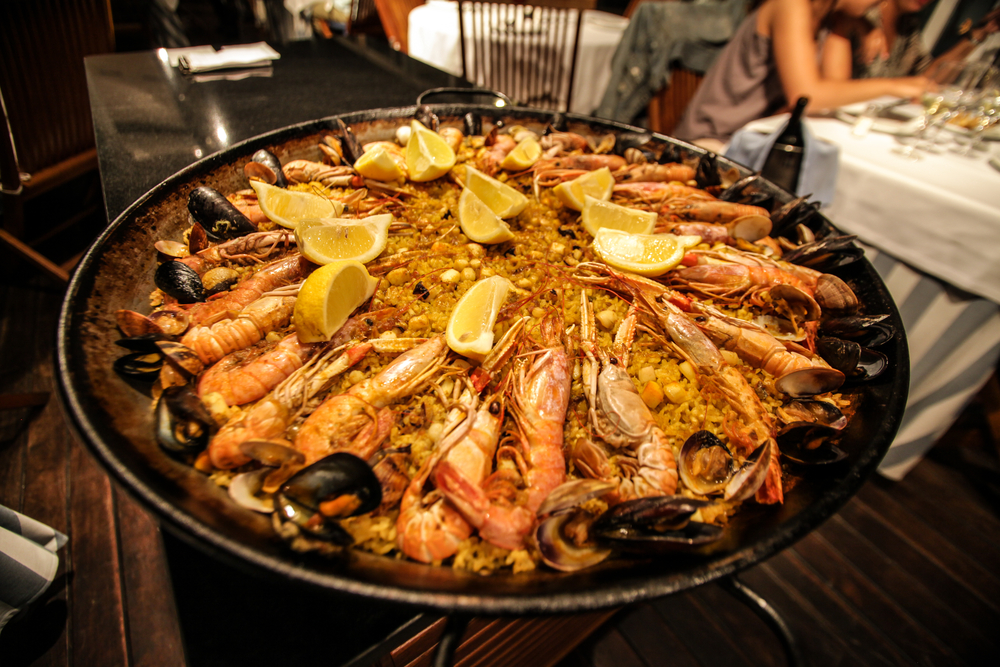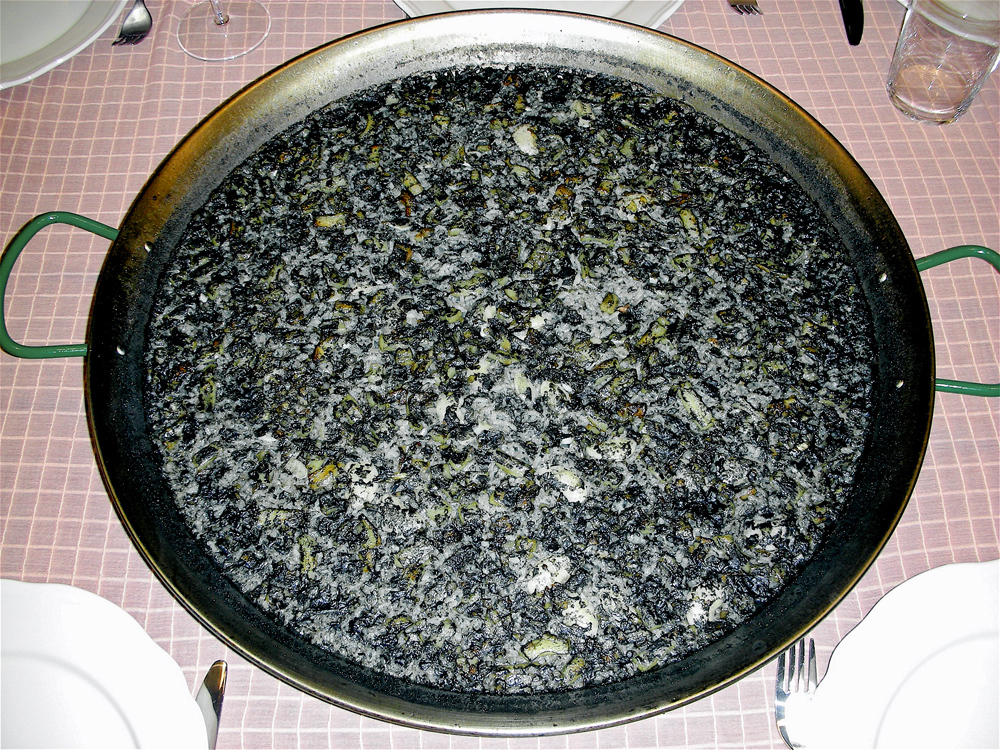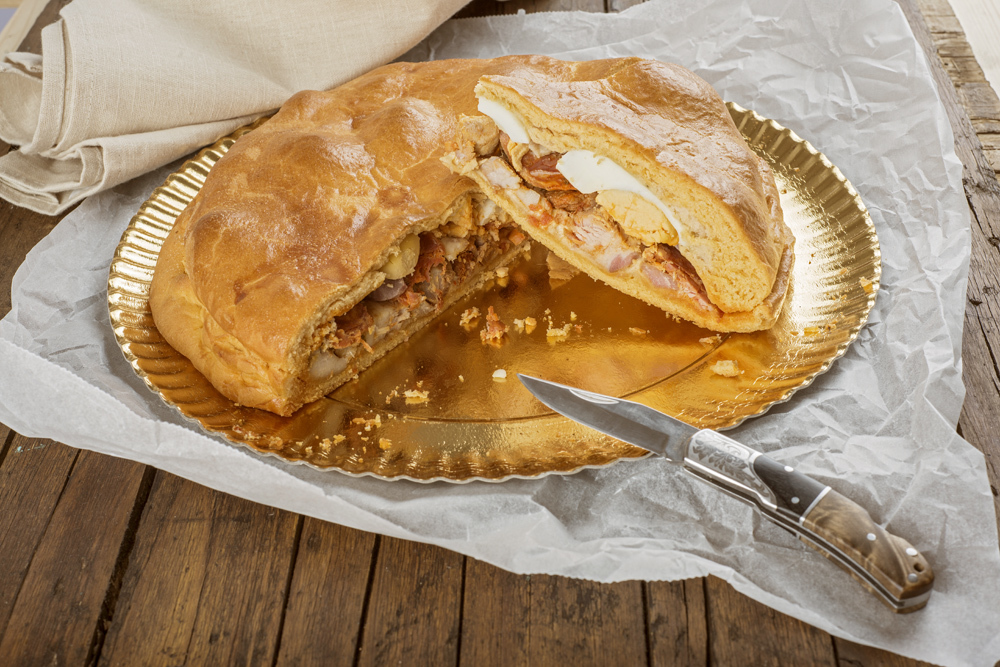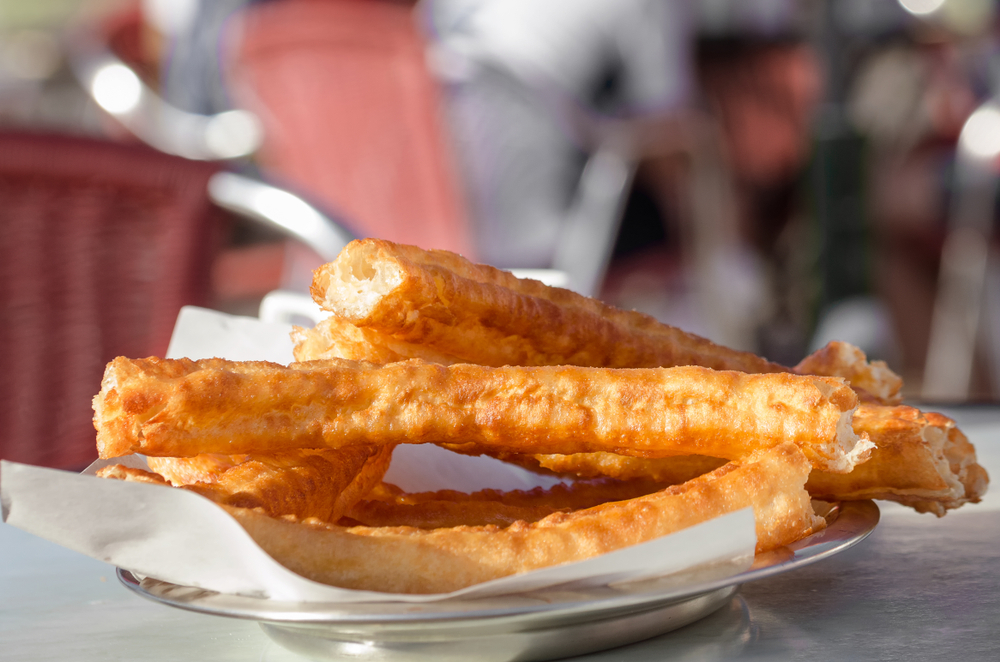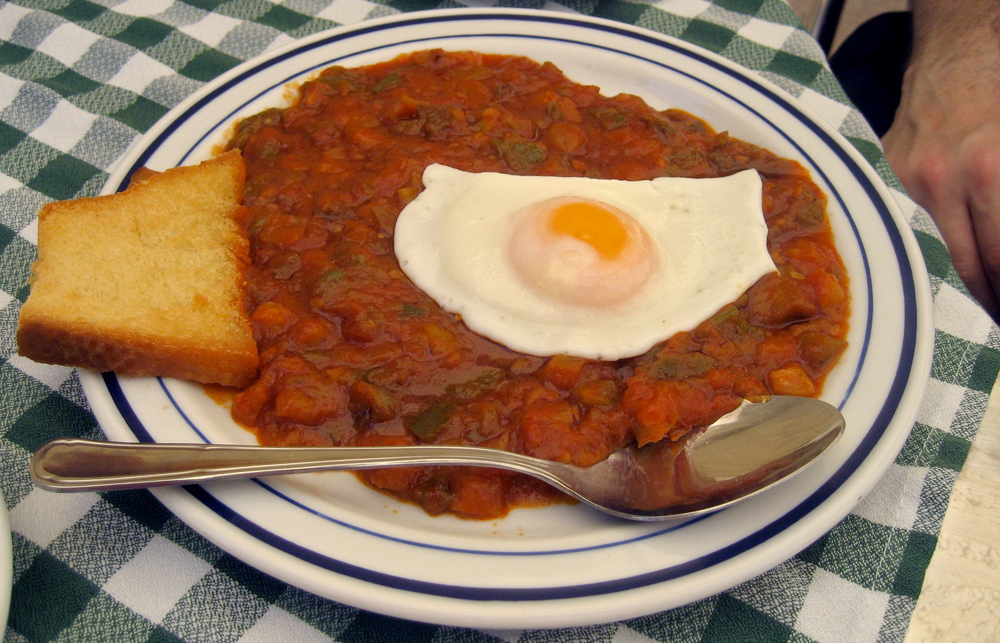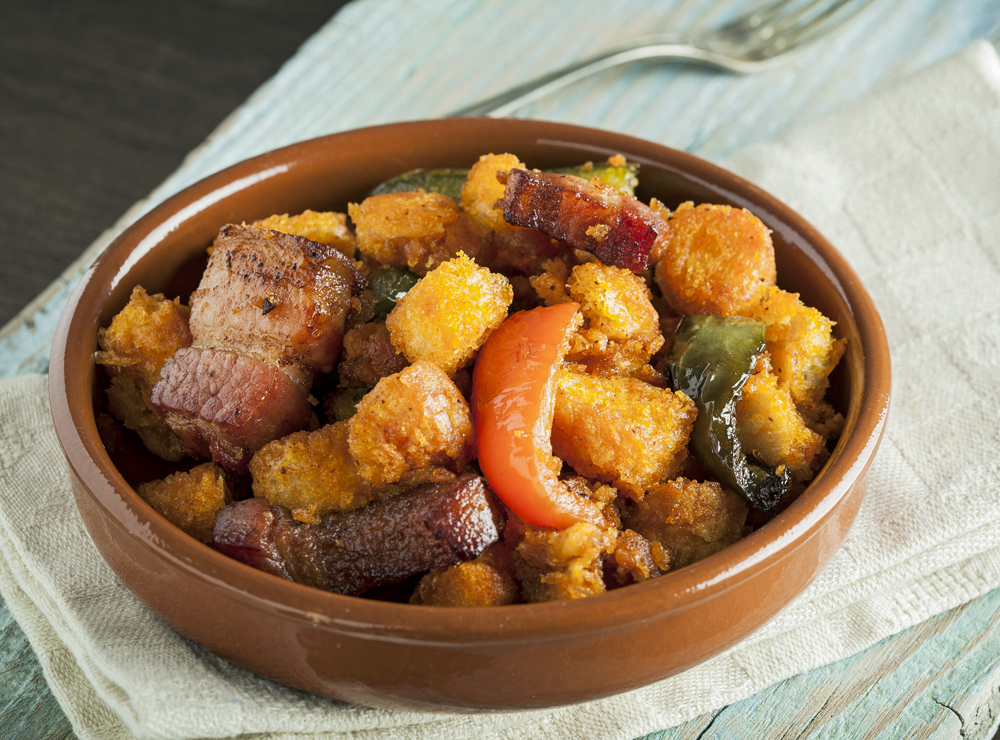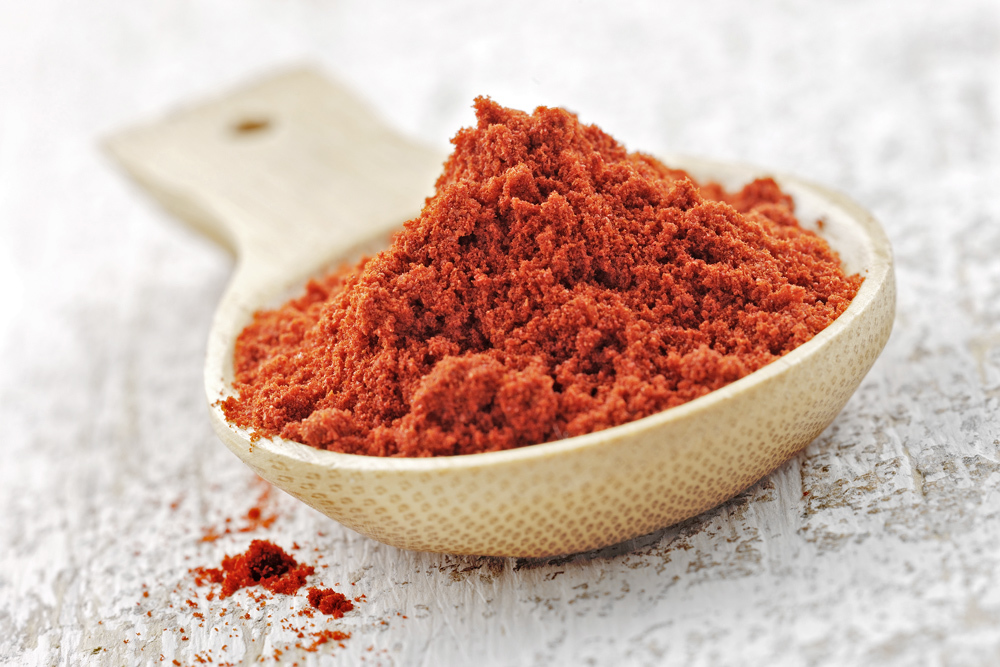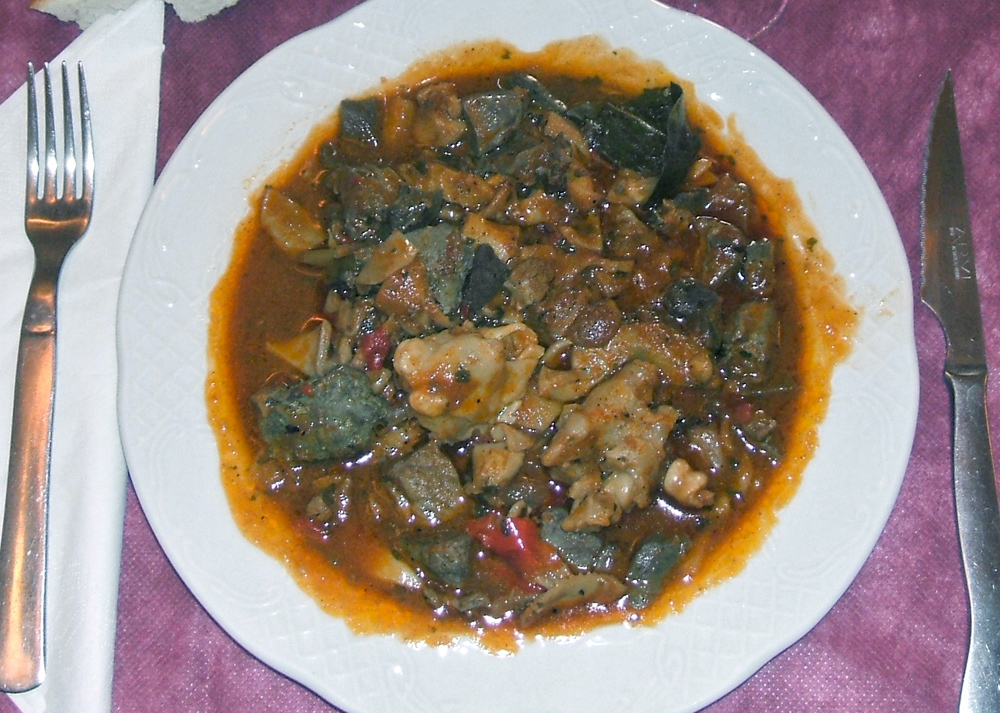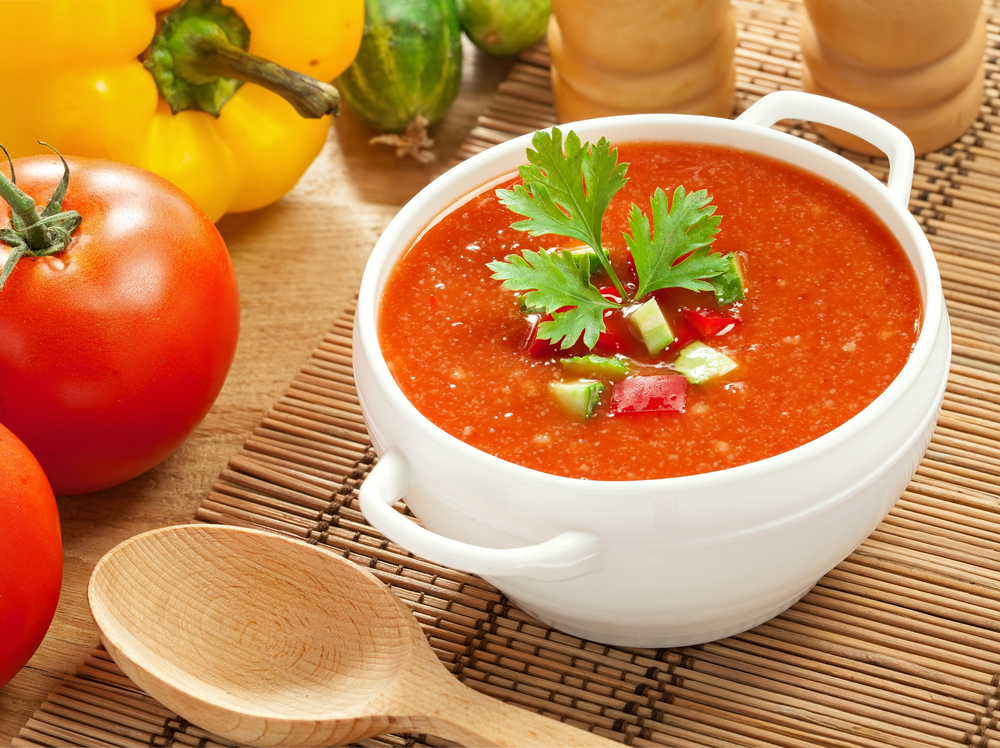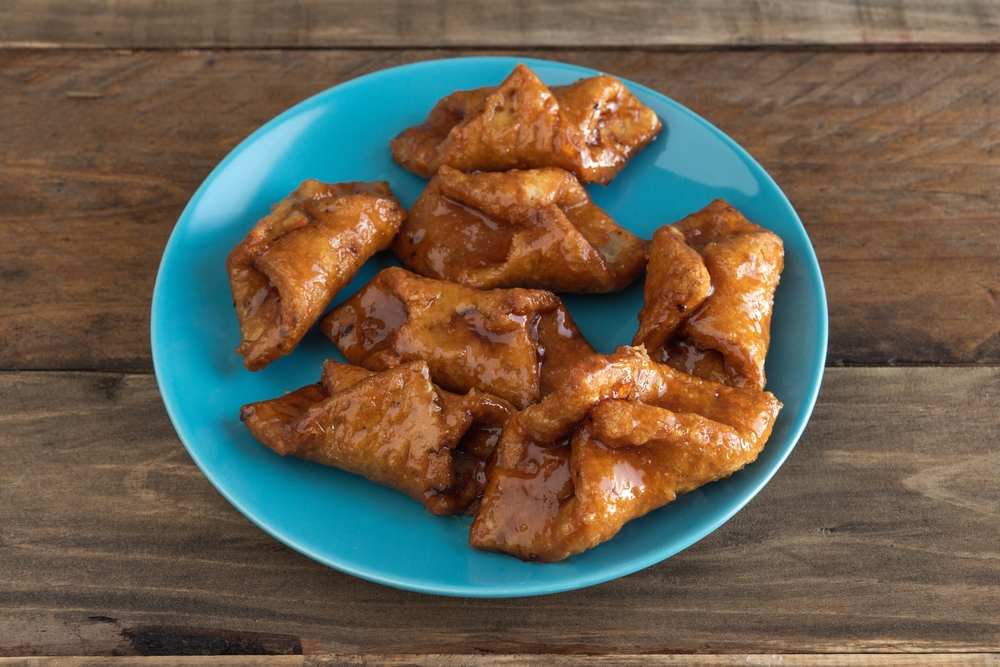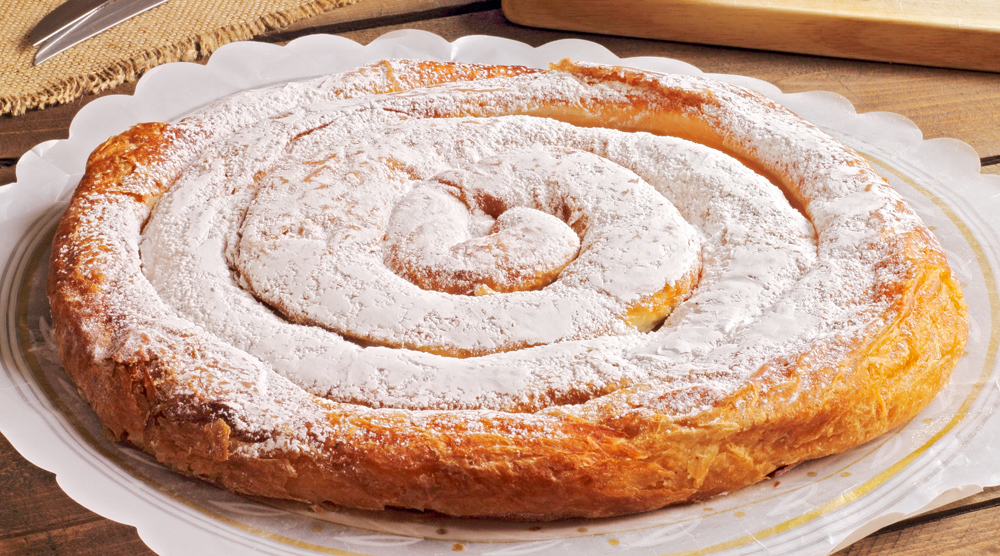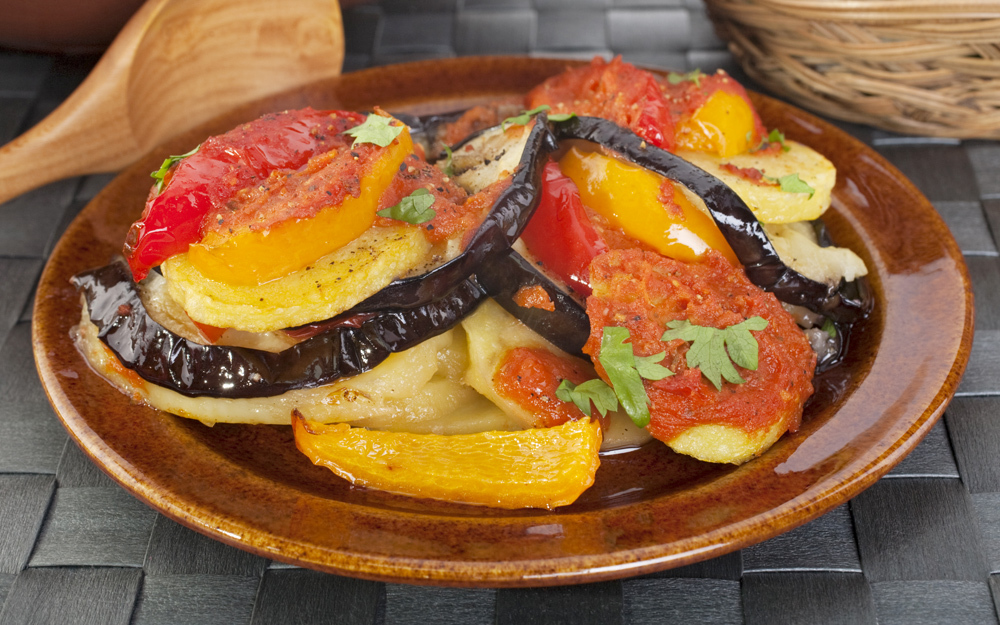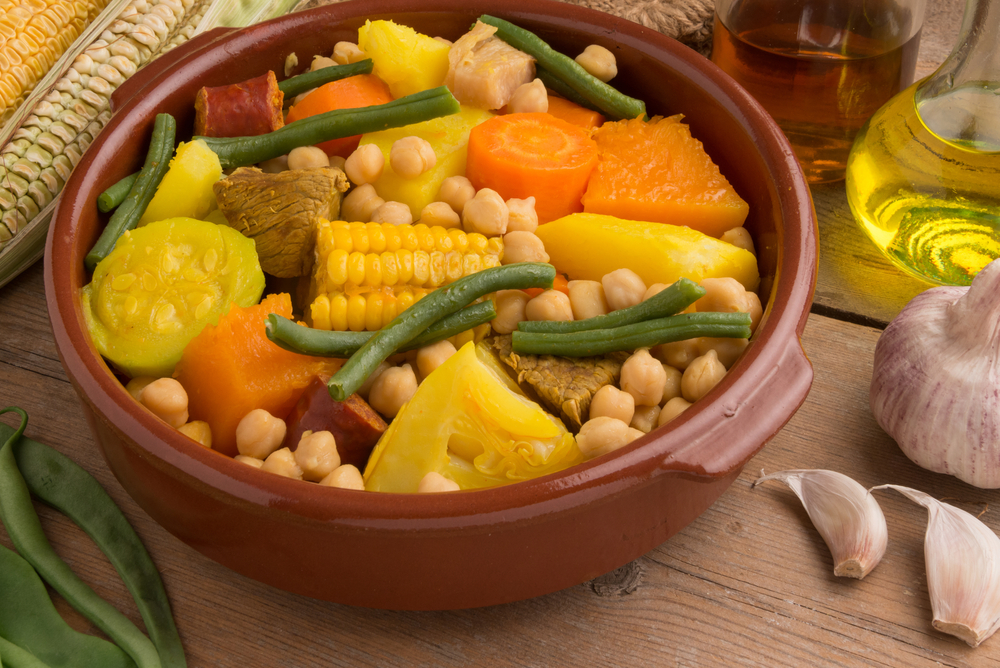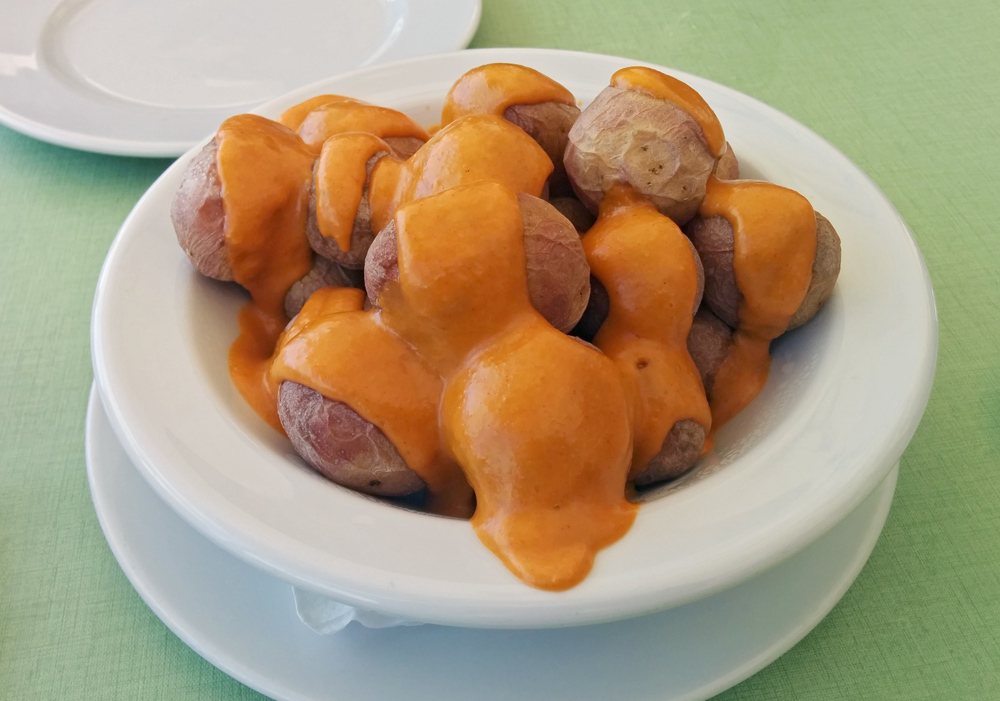Food and Drink: Regional Cuisine
From the sun-drenched southern coast to the windswept central plains of La Mancha, from the Pyrenees mountains in the west to the misty green hills of the north, Spain’s diverse landscapes sit at the crossroads of Europe and North Africa, the Mediterranean, and the Atlantic. Spanish cuisine reflects notes from these diverse geographic, climatic, and cultural zones.
Foreign Influences
Spanish food also contains many traces of the Iberian Peninsula’s history of foreign influences. Roman invaders, for instance, introduced olives and winemaking to Spain, establishing a strong Mediterranean foundation to the nation’s cuisine. Celtic invaders from the British Isles popularized meat pies and salted fish in the north. But perhaps the most prominent influence on Spanish cuisine is Moorish. The Muslim invaders who conquered parts of Spain for nearly eight centuries introduced a variety of new crops from the Middle East, such as citrus fruits, rice, sugarcane, spinach, eggplant, and almonds, as well as spices like cumin and saffron. These flavors became formative in the development of Spanish cuisine, and reflect Spain’s long multicultural and religious history.
Spain's Global Influence
Spain also played an important role in influencing food and drink around the globe: in the early 16th century, Spanish explorers to the New World transformed both the Spanish and European diets by introducing novel ingredients from the Americas, including tomatoes, potatoes, chili peppers, corn, and cacao. Today, Spanish food products such as wine and olive oil are exported worldwide, and tapas have become part of international cuisine.
Agriculture
With fertile valleys in the interior and a sunny, dry climate throughout most of the country, Spain’s rich agricultural lands produce excellent fruits and vegetables, and its mountain hillsides are well suited to olive and grape production. In fact, Spain is the leading supplier of fresh fruits and vegetables to the European Union. Spain is also a leading global producer of olives, olive oil, wine, and saffron, all of which are used liberally in traditional dishes.
Spain’s extensive pork, cattle, and dairy industries produce indispensable products such as chorizo (a spiced Spanish sausage), cured hams, beef, and cheeses. These meat and dairy products are essential to Spanish cuisine, but seafood also plays a prominent role, particularly in the coastal areas.
Regional Differences
Like neighboring France and Italy, Spanish regional foods follow a rough north-south divide: northern cuisine tends to be heartier and richer, marked by meat dishes and stews, while southern cuisine calls upon lighter, more classic Mediterranean flavors and cooking styles. Lard, for example, is more commonly used as a cooking fat in the north, while olive oil is typical in the south.
Culinary Regions of Spain
Galicia
Located in the northwestern corner of Spain, Galicia is known for its cold, wet climate, rugged landscape, and stormy seas—and its bountiful seafood. Galician culture has its origins in its early Celtic inhabitants, and this culinary influence is most visible in empanadas (fish and meat pies). Potatoes thrive in the cool climate, along with wheat and corn. The region's traditional cuisine is hearty and rustic, and it can be traced to its history as a comparatively economically weak and politically isolated corner of Spain.
Polbo á Feira. In this traditional Galician dish, known outside of Galicia as pulpo a la gallega, octopus is dipped in boiling water then simmered for about 20 minutes to reach an “al dente” consistency. It is then flavored with coarse salt, paprika, and olive oil and served with boiled potatoes or bread on a wooden plate.
Lacón con Grelos. Attesting to the region’s Celtic origins, this representative Galician dish is a plate of boiled pork with boiled broccoli greens and potatoes.
Caldo Gallego. This hearty soup includes cold-weather vegetables that thrive in the local climate—such as cabbage, sweet turnip greens, and potatoes—as well as white beans and pork fat or chorizo.
Torta de Santiago. The Camino de Santiago winds through Galicia, and the region has received Christian pilgrims since the Middle Ages. This cake is made of ground almonds with eggs and sugar, flavored with lemon zest and brandy or wine, and is decorated with the cross of Santiago, or St. James, on top.
Asturias
Along the northern coast to the east of Galicia lies the Principality of Asturias, an autonomous community noted for its fine rural character and verdant landscapes. Historically, this region was defined by the excellent seafood and dairy products produced there.
Asturias is particularly noted for its goat’s milk and sheep’s milk cheeses, such as cabrales blue cheese, which is aged in caves and enjoys protected denomination of origin. Apple cider (sidra) is to Asturias what red or white wine is to other regions of Spain, and the alcoholic beverage is also a prominent ingredient in local cooking.
Fabada Asturiana. This heavy bean stew contains white beans, chorizo, and pork shoulder. It is sold canned throughout Spain and is a typical winter lunch dish.
Merluza a la Sidra. This classic fish stew represents Asturias well using local ingredients. Merluza a la sidra features local hake baked with clams, prawns, onions, potatoes, apples, saffron, and a dash of cider.
Basque Country
The Basque people are an ancient, fiercely independent ethnic group, who today live in the autonomous País Vasco or Euskadi of northeast Spain. The Basque predate Roman settlement of the Iberian Peninsula, and they have held onto their culture and language for millennia. Given the region’s fertile mountain valleys inland and its long Atlantic coastline, Basque cuisine is known for its seasonal land and sea ingredients: lamb, grilled meats, sheep’s cheese, beans, and peppers, as well as cod and seafood.
The Basque style often includes tomatoes and local red espelette (pil-pil) peppers, giving Basque food a spicy, acidic twist uncommon in the rest of Spain. Cider houses—rustic restaurants specializing in cider and traditional country fare—dot the countryside, and Basque men gather at txokos, social dining clubs where they cook traditional Basque dishes. The city of San Sebastián is famous for its tapas culture and has more Michelin-rated restaurants per square kilometer than any city in the world except Paris. While retaining its proud rustic roots, contemporary Basque cuisine has also become decidedly gourmet.
Bacaloa al Pil-pil. Cod—whether smoked, salted, or sautéed—is omnipresent in Spanish and Basque cuisine. This iconic recipe calls for salted cod quick-fried with garlic and pil-pil—tiny, fiery red peppers used widely in Basque cooking.
Marmitako. Basque fishermen traditionally ate this simple stew of tuna, onions, peppers, and tomatoes during their long voyages at sea.
Piperade. This soupy vegetable dish contains tomatoes sautéed with onion, green pepper, and spicy red espelette peppers. Either eaten as a main course or served with meat or fish, piperade is considered a patriotic dish because it contains the colors of the Basque flag: white, green, and red.
Gerezi Beltza Arno Gorriakin. This sweet, slightly syrupy cherry soup is made of cherries poached in wine, and is served with a dollop of cream.
Catalonia
The autonomous community of Catalonia—located on the Mediterranean coast in the northeast corner of Spain, bordering the Pyrenees and France to the north—was an independent principality for much of its history, and Catalonia developed a cultural and linguistic identity distinct from the rest of Spain. Its mild climate and geographical diversity—ranging from coasts to mountains to fertile plains—ensure a steady supply of high-quality seafood, meats, cheeses, wines, mushrooms, and fruits and vegetables. Sauces such as garlic aioli are much more prominent in Catalan cooking than in Spanish cuisine generally, perhaps owing to the French influence. Catalonia is considered one of the gourmet hotspots in Spain and displays strong Mediterranean, French, and Italian influences, but is decidedly unique.
Pa Amb Tomaquet. While the rest of Spain may eat their bread with butter or olive oil, Catalonians prefer their bread rubbed with a mixture of tomato, olive oil, and salt. It is said to be a patriotic dish, as it contains the red and yellow of the Catalan flag.
Calçots. Resembling small leeks, calçots are mild onions unique to Catalonia. During the annual harvest celebration called Calçotada, they are fire-grilled and dipped in romesco sauce—made with roasted red peppers, garlic, and nuts—and served with bread and wine.
Esqueixada. This uncooked seafood salad combines shredded salted cod, tomatoes, vinegar, olive oil, and olives. The fresh, cool dish is a summertime favorite.
Escudella i Carn d'Olla. This Catalan peasant soup contains large meatballs spiced with garlic and parsley in a clear vegetable broth. The Christmas version (Escudella de Nadal) contains four meats and a snail-shaped wheat pasta called galets.
Valencia
The autonomous community of Valencia, located along the southern Mediterranean coast between Catalonia to the north and Murcia to the south, has truly created an international name for itself with Valencian oranges and paella valenciana. Sweet Valencian oranges are exported around the world, and the local recipe for paella has effectively become the standard.
Moorish invaders reached the shores of Valencia in the 8th century and introduced the citrus fruits and rice for which it would become famous. The Moors also brought sugarcane and advanced irrigation systems, which established Valencia as a formidable agricultural producer on the Iberian Peninsula since the late first millennium. Unlike other parts of Spain, where wheat dominates, Valencia’s staple grain is rice.
Paella. Though there are technically many types of paella, the Valencian version is the leading recipe. It contains chicken, rabbit, snails, haricot beans, and bell peppers cooked with short-grain rice, and is flavored with olive oil, garlic, paprika, and saffron. The seafood version—containing mussels, cuttlefish, and shrimp, though ingredients can vary—is also considered a traditional Valencian dish.
Arròs negre. Sometimes called “black paella,” this rice dish with cubanelle peppers, squid, and other seafood gets its velvety black color from squid ink.
Fideuà. Meaning “a large amount of noodles” in the local dialect, this dish is similar to seafood paella, but uses hollow pasta noodles instead of rice.
Horchata Valencia. Local horchata de chufa is a milky beverage of a ground brown tuber called tigernut, blended with water and sugar. It is served ice cold as a refreshing drink on hot summer days. This is not to be confused with Mexican horchata, which is made of rice and flavored with cinnamon.
Castile and León
Castile and León, a northwestern-central region, is the largest autonomous community in Spain. The landlocked region is associated with its grilled and roasted meats (called asados), especially roast lamb and roast suckling pig. The community’s nickname, España del Asado (which literally translates to “Spain of the roast”), is testament to this. Stews, meat pies, and freshwater fish dishes are also prominent. Legumes such as lentils and chickpeas, garlic, apples, sausage, and cheese are other key ingredients in Castile-Leonese food.
Hornazo. This round meat pie contains a mixture of pork loin, spicy chorizo, and hardboiled egg in a wheat pastry. In Salamanca, it is traditionally eaten during the Lenten Lunes de Aguas (Monday of the Waters) festival, during which prostitutes were sent across the river to the other side of town so as not to distract the men during the holy weeks. The men were said to satiate their appetites with hornazos instead.
Olla podrida. This humble stew of pork and beans is a specialty of Burgos, and highlights two of the leading ingredients of this region’s cuisine.
Yemas de Santa Teresa. Originally from the province of Ávila, these egg-yolk confections are small orange balls flavored with lemon juice and cinnamon. They are popular throughout Spain and also in the Philippines.
Madrid
King Felipe II established Madrid as the capital of the Spanish Empire at the end of the 16th century, and the city soon drew visitors and immigrants from around Spain and beyond. The resulting continuous cultural exchange has given Madrid’s cuisine a wide variety of influences from regional Spanish cookery, expanding upon the roasted meat dishes and simple stews for which central Spanish cuisine is best known. In the late 20th century, Madrid’s food scene became increasingly international, owing to its large immigrant population, particularly its North African and Latin American communities. The capital city has a vibrant restaurant and bar scene, and is a place where gathering with friends over tapas and drinks at a local bar after work is a way of life.
Patatas bravas. A popular bar and tapas snack rumored to have been invented in Madrid, patatas bravas are chopped white potatoes shallow-fried and served with a spicy tomato sauce.
Beer and Boquerones. Beer and anchovies may not seem like particularly Spanish foods, but both have strong links to Madrid and are typically served together at bars. The beer tradition dates to the 16th century, when Flemish ruler Emperor Charles V brought brewers from his home country to Madrid; the anchovies come from the country’s best fish market, the Mercamadrid. The beer is served on tap and the anchovies in a dressing of white vinegar with parsley.
Cocido Madrileño. This popular lunchtime beef and vegetable stew is a one-pot meal served in three courses: first, the broth as the soup; second, the vegetables and beans; and third, the stewed meat and sausage.
Callos a la Madrileña. This wintertime standby is a hearty tripe soup cooked with tomato, chorizo, and ham, flavored with sweet paprika. This dish brings together culinary influences from around Spain.
Porras. Spongy flour pastries deep-fried and dipped in sugar are a popular breakfast food, often eaten with a cup of hot chocolate. Porras are related to but not as sweet as churros.
Castilla-La Mancha
Located south of Madrid and Castile and León, the vast plains of central Castilla-La Mancha were home to Cervantes’s Don Quixote, who memorably mistakes the clouds of dust kicked up by an approaching herd of sheep with an advancing army. The region’s characteristically modest cuisine stems from the bucolic lifestyle depicted in the pages of this Spanish masterpiece, marked by hearty stews of pork, mutton, and lamb, along with fresh cheeses, crusty breads, and wine. This productive agricultural region is known for its saffron and garlic, as well as its Manchego cheese.
Pisto Manchego. One of the region’s iconic dishes consumed throughout Spain is pisto Manchego, a bell pepper stew with tomato and eggplant, served with a fried egg on top.
Sopa de Ajo. A humble garlic soup is flavored with tomato, paprika, and olive oil.
Migas al Pastor. “Shepherd’s breadcrumbs” puts day-old bread to good use: small pieces of bread are fried with sausages, ham, garlic, and olive oil.
Torta de Gazpacho. Not to be confused with the cold tomato soup of Andalusian cuisine, this Castilla-Manchego specialty is actually an unleavened wheat flatbread that is torn into small pieces and combined with a stew. Ingredients include game meat such as pigeon or rabbit, flavored with bay leaf, garlic, and thyme. It was traditionally eaten by shepherds tending their flocks on cold nights.
Extremadura
The landlocked western region of Extremadura is vast and sparsely populated. Its largest industry is meat production, as its fields and mountainsides are ideal for cattle, pig, sheep, and goat grazing. The local pork is considered some of the finest in Spain, as pigs still often graze semi-wildly on wild acorns, giving the meat a particularly sweet taste. Accordingly, the local cuisine is heavy on meat. The region is also known for its oak-smoked paprika, made from the local pepper pimentón de la vera, which was brought back from the Americas by conquistadors and cultivated by monks in local monasteries. Traditional dishes are often served communally, and always with crusty slices of bread and olive oil. Rabbit, frog, offal meat, and eggs are other important proteins, attesting to the rural, peasant character of the region.
Chanfaina. This rustic stew contains mutton brain, heart, lung, and liver slow cooked with garlic, eggs, and breadcrumbs.
Frite Extremeño. Young goat meat chopped and braised in tomatoes, local red peppers, and smoky paprika. Served both hot and cold.
Andalusia
The sunny, warm climate of Spain’s southern coast has helped make Andalusia one of Spain’s leading producers of fresh fruits, vegetables, and grains. Its prime agricultural conditions have been exploited since antiquity: the Romans introduced wheat and grape production, and the Moors developed irrigation systems to grow fruits, vegetables, and olive trees. Andalusia was the center of Moorish culture in medieval Spain, and Andalusian cuisine is deeply influenced by Middle Eastern flavors such as orange and lemon, cinnamon and nutmeg, almonds, figs, and pomegranate. Some of the best jamón serrano, olive oil, and fish in Spain are said to come from Andalusia.
Brandy and sherry from the city of Jerez are famous and enjoy protected designation of origin status. The region’s strong brandy tradition dates to the Moorish period, when Moors ordered local winemakers to produce alcohol for medicinal uses and perfume, as the Islamic faith forbids wine consumption.
Though tapas are popular throughout Spain, they are believed to have originated in Andalusia. The custom is said to have arisen at Andalusian taverns, where barkeepers would place a slice of meat or cheese over the top of each patron’s cup as a way of protecting the glasses of sweet sherry from being infested with fruit flies. The slices of salty ham or chorizo had the added benefit of making patrons thirstier—and increasing drink sales.
Gazpacho. This chilled, raw soup of tomatoes, cucumber, pepper, olive oil, and vinegar is a light and refreshing antidote to hot days.
Fried Seafood a la Andaluza. Shellfish such as shrimp and clams, as well as squid, octopus, and anchovies, are deep-fried in olive oil. The local Andalusian recipe calls for dredging seafood in chickpea flour, without egg or other ingredients.
Menudo Gitano. This hearty stew of chickpeas with tripe served in a clay pot combines both Moorish and mountain Spanish peasant cooking traditions.
Huevos a la Flamenca. Eggs in the flamenco style—baked over a bed of vegetables—are a specialty of the city of Sevilla.
Pestiños. This sweet pastry is a kind of donut deep-fried in olive oil, then dusted with honey or sugar. Though Moorish in their origin, pestiños have become a popular snack eaten during Christian holidays and holy weeks.
Balearic Islands
Due to strong trading ties and a relative proximity to the coasts of Catalonia and Valencia, the cuisine of Spain’s Balearic Islands (including Mallorca, Menorca, Eivissa/Ibiza, and Formentera) shares much in common with its mainland neighbors. Traditional Balearic foods are rich in fruits and vegetables, grains, and legumes, complemented by small amounts of fresh fish and meat, and are thus a strong example of the Mediterranean diet paradigm. Almonds, tomatoes, fresh bread, citrus fruits, and olive oil are key flavors.
Ensaïmada. This Mallorcan spiral-shaped wheat pastry is deep-fried in saïm, reduced pork lard. Historically baked for festivities, it is now a popular breakfast food or snack, and is also eaten throughout Latin America and in the Philippines.
Sobrassada. Made from the black Balearic pig, sobrassada is a cured pork sausage flavored with paprika. It is traditionally made by hand during the autumn harvest festival of matança in Mallorca and Ibiza. For most of history, sobrassada was the main source of meat in the local diet.
Tumbet. This vegetarian dish of sliced eggplant, potatoes, tomatoes, and peppers is lightly fried in olive oil and then baked. Served in an earthenware pot, tumbet highlights the region’s exceptional fresh vegetables.
Coca. The Balearic take on pizza contains tomatoes, onions, and peppers atop a thin-crust pastry. It is served at virtually every bakery in the Balearic Islands.
Canary Islands
Often referred to as the islas afortunadas (fortunate islands), the Canary Islands are indeed blessed with a mild, sub-tropical climate and year-round sunshine. Located about 60 miles (nearly 100 km) off the northwestern coast of Africa in the Atlantic Ocean, the islands are geographically isolated from both mainland Spain and Africa but have many culinary influences from each.
Spanish explorers conquered the islands in 1500, and the local population was quickly assimilated into the dominant Spanish culture. The Canary Islands were historically the first port of call for Spanish galleons returning from the Americas, and New World ingredients such as sugarcane, potatoes, tomatoes, beans, corn, and tobacco flourished there. Fish and seafood from the local waters—served salted, fried, or dried—were the main protein sources. During periods of economic difficulty throughout the 19th and 20th centuries, many Canarians left for Latin America. Returning émigrés brought Latin American recipes, which have also complemented the traditional Spanish and North African flavors.
Puchero Canario. This stew is served as two courses: the broth is drained off for the soup course, and the stewed vegetables are served as the main. The ingredients—pork, pumpkin, cabbage, and sweet potato—are a blend of Spanish, African, and Latin American ingredients.
Papas Arrugadas. These small “wrinkled potatoes” get their name from being long boiled in seawater, leaving them wrinkled and with a salty crust. They are typically accompanied by mojo picon, a sauce of garlic, paprika, breadcrumbs, and vinegar.
Gofio. Considered one of the traditional dishes of the indigenous inhabitants, gofio is flour made from roasted grains or starchy plants (first, native tubers and legumes, and later, wheat or corn). This versatile ingredient is added to everything from soups and stews to sausages, ice cream, and sauces. During lean times, it was eaten as raw dough called pella by mariners and peasant farmers.
Article written for World Trade Press by Carly K. Ottenbreit.
Copyright © 1993—2025 World Trade Press. All rights reserved.

 Spain
Spain 